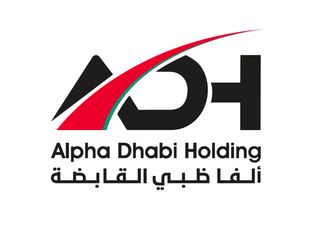
While the global economy continues to improve from one of the worst financial crises ever, 2009 will be remembered as the year that emerging market (EM) bonds led the global recovery efforts. Last year's recovery was unprecedented, and EM investors were not disappointed.
EM bonds posted their second-best return on record as measured by the J.P. Morgan EMBI Global Diversified Index. This encouraging return is mainly due to the strong sovereign balance sheets and manageable public debt burdens of the EM governments, as compared to the developed economies of the US and the euro zone.
Following the strong rally in 2009, the key question being asked by EM investors is: "Where do we go from here?" Valuations, of course, are far less compelling than they were a year ago, but we still believe that EM bonds are attractive, given that the aggregate current accounts of emerging countries remain in surplus, external and public debt ratios are falling, and foreign exchange reserves are high.
In addition, EM countries have contributed more to global gross domestic product (GDP) growth than developed markets. As we enter 2010, we feel that growth in developing countries will continue to outpace that of advanced countries.
The desire of EM governments to set their economies on a sustainably higher growth trend is an important supporting driver for EM bonds.
Achieving the ambitious goals of many EM governments will require continued sound economic policies, including a commitment to prudent fiscal and monetary management, sound banking systems and infrastructure investments.
EM bonds have historically produced 300- to 500-basis points of additional yield relative to US Treasuries, and we believe the expected growth outlook of EMs still remains very strong in the near term.
In fact, many EMs, such as those in Latin America, have been quite resilient to the global crisis. Their consumer and corporate balance sheets are much less leveraged than those of the developed markets, giving them the ability to continue lending into the cycle to fuel economic growth.
Further, most of the EMs are also commodity exporters and realised growth from the rebound in commodity prices this year. This helped their currencies and fiscal accounts, and, in turn, benefited their bond markets.
Given the positive factors discussed above, improving fundamentals of the underlying countries and tighter monetary policies, the asset class has experienced a broadening of its investor base. External demand for EM assets is expected to remain strong because new and growing sources of inflows include high-grade crossover investors, US pension allocations, sovereign wealth funds and Japanese investment trust allocations.
The key factor for these new investors has been the continuing improvement of the asset class' credit quality and its resiliency through the latest economic crisis. As the two charts illustrate, the average credit quality has continually increased as spreads have tightened. In doing so, this has opened the door to new investors who otherwise weren't able to invest in the asset class due to quality restrictions. We feel this trend will continue into 2010 and will have a positive effect on returns for the year.
Another key issue facing investors in 2010 is how to weight their portfolios between local currency and US-dollar denominated debt. We feel local currency emerging debt will outperform because yields are higher in local currencies, and we believe there will be room for currency gains as a result of improving fundamentals and monetary policies.
It's important to note that local currency debt allows investors to participate in the further maturation of the EM debt asset class and can add a further dimension to the total return and risk diversification of overall fixed-income portfolios. Of course, EM debt also carries its own risks, and investors should carefully consider those risks before investing.
Conclusion
Going into 2010, EM fundamental and financial market outlooks remain robust. EM countries have been able to weather the financial storm much better than those of advanced economies globally. The strong performance of EM fixed income in the midst of market turbulence in 2008 and the subsequent performance over the past year as the market recovered represented a major stress test for these countries.
The global economy has experienced an unprecedented recovery for the year, and market participants generally feel the "recovery trade" we have experienced since the end of March is slowing. The market is now entering a consolidation phase.
Additional spread tightening will depend on supportive technicals and fundamentals as we continue to recover from the economic failures globally. We now feel that the "beta" trade has largely run its course, and are focused on relative value and single name selection because we still like the risk-reward profiles of select credits and countries.
From a positioning perspective, we have increased our weight within corporate EM bonds because these bonds continue to perform well, and valuations, in our view, remain attractive.
In addition, as discussed, we believe local currency debt will remain attractive with the strongest returns likely to come in the Central and Eastern Europe, Middle East and Africa (CEEMEA) region, as we believe EM foreign exchange appreciation will endure at least through the first half of 2010 amid US dollar weakness.
The writer is Head of Emerging Markets, Invesco Fixed Income.











